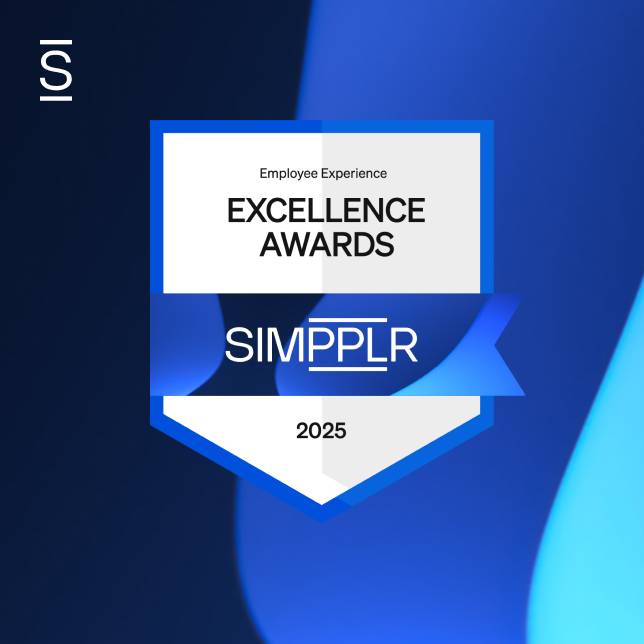We are seeing unprecedented times in our world. The growth of the remote workforce is becoming a mainstay for employers as we move into a post-pandemic environment. In fact, according to a June 2021 Bloomberg article, a Morning Consult poll on behalf of Bloomberg News revealed that “39% of US Adults would consider quitting if their employers weren’t flexible about remote work.” That is astounding news!
According to the same Bloomberg article, there was also a clear generational difference in respondents and their responses. Millennials and Gen Zers were also willing to quit if employers were inflexible—but at a higher rate of 49%. The results can no longer be solely attributed to the effects of the COVID-19 pandemic. Something has happened within the minds of employees that made them reevaluate what they wanted from their employers and their work environment, and a work-life balance.
So, what changed in the past two years that made employees desire and demand more from companies regarding remote work? Clearly, employees like the flexibility of working from home.
According to FlexJobs’ 10th Annual Survey, 97% of workers want some form of remote work. Fifty-eight percent of respondents desire to work remotely full-time, and thirty-nine percent want a hybrid work environment. Simpplr’s State of the Employee Experience 2022 found that 53% of workers were in a post-pandemic hybrid employment situation, with 30% working primarily or fully remote. The hybrid and remote reality are here to stay.
With the onset of the Great Resignation and workforce attrition, employers are in a bind to balance both their business and employee needs while constructing the best engagement for everyone, especially the remote employee. They are finding that the cost to replace attrition is more than expected. According to Simpplr’s studies, the cost to replace a non-C-suite employee is 1.5 times the cost of their annual salary. The cost to replace a C-suite executive? Try 2.4 times their annual salary.
So, how do you build an environment suitable for employee engagements making them want to stay? Simmplr believes the answers need to come from the right questions.
What is Employee Engagement?
First, let’s begin by defining employee engagement. The truth is employee engagements have a variety of definitions across fields of business. However, as we process through them, you will see a thread of commonality.
- The famed management and consulting company Gallup defined employee engagement as “the involvement and enthusiasm of employees in their work and workplace. Employee engagement helps you measure and manage employees’ perspectives on the crucial elements of your workplace culture.”
- Quantum Workplace, a tech company specializing in employee engagement and performance software, states that “Employee engagement is the strength of the mental and emotional connection employees feel toward the work they do, their teams, and their organization.”
- Kevin Kruse, author of “Employee Engagement 2.0,” CEO and founder of LEADx–a leadership development, corporate training, and executive coaching firm–stated in a Forbes article that “Employee engagement is the emotional commitment the employee has to the organization and its goals.” Kruse also wrote that “This emotional commitment means engaged employees actually care about their work and their company. They don’t work just for a paycheck, or just for the next promotion, but work on behalf of the organization’s goals.” However, Kruse was careful to detail what is not an engagement. Employee engagement does not mean employee happiness, nor does it mean employee satisfaction.
Interestingly, all of these definitions have an element of an emotional attachment to the company, to managers, and team members. But how is that fostered?
While there is a difference between the types of engagements an in-person and remote employee may have, there is a similarity between the two. Both types of engagements need you as an employer to create an employment journey that leads to an overall experience, which can only be accomplished if an employee is engaged.
How should you engage remote employees?
Now that you know what employee engagement is and that an employee will only have a successful experience when they are fully engaged and connected, let’s ask the next question. Is there a difference between the types of engagements an in-person employee and remote employees may have? Absolutely!
With many companies either staying remote or moving to a hybrid version work environment, keeping both types of employees engaged can be challenging. However, many have realized that the difficulty for the last two years has been connection. If we review remote work in general, that has been the issue all along. Now that a great part of the population is in the same work situation, companies and organizations are trying to be more proactive in positively engaging all types of employees, especially that telecommuting.
When people are forced into creating a virtual environment for those employees who will be partly in-person and those who will never be in-person, there are obvious connections that can’t be replaced. But can they be replicated?
In-person employees and teams are heavily reliant on the social aspect of the face-to-face work environment for their contact. Think about the water cooler and other centers of social interaction. They serve the purpose of fostering comradery that makes its way into team building. Speaking of team building, there is nothing like a good off-site session to build up your team’s strength. Don’t forget mentors, peer coaching, and managers who can improve teams and the organization. Then, there is the company culture that binds everyone together. All this is well and good, but can it help remote teams? Yes, it can!
With remote teams and employees, the need to build cohesion for remote team members is at the forefront of your initiative. Just because you have a disparate workforce doesn’t mean a divided remote team. There are several initiatives to add to your remote employee engagement ideas strategy for those who telecommute. Here are a few:
- Make them feel like they are part of the team: Every human being has a desire for a sense of belonging. This emotional connection should be the foundation for your strategy. That means developing efforts for inclusivity and considerations for diversity in your culture. Weave in the need for remote employees to feel a part of the team when considering this. Utilizing remote employee engagement strategies and events will make your remote employee more productive and loyal. Don’t forget your technical and collaboration tools, and communication tools such as Zoom, Slack, Google Meets, and other virtual workspaces to elevate your engagement levels.
Utilize your managers to coach and communicate
The best role models for your employees are their immediate reports. In a Gallup survey, “70% of the variance in team engagement is determined solely by the manager.” Managers have more face-to-face time with your employees, whether remote or in-person, than anyone else in your company. They are your best asset for advising and redirecting employees, coaching and encouraging them, and helping them improve their performances to become more effective. Managers are your intermediary providing distilled information of company goals and desired outcomes. Most of all, they are your communication, being the face, eye, and ears of your organization, having the greatest impact on your employee’s engagement. With remote employees, especially new hires, the outcomes of coaching and communication have even a greater effect on them. Considering the desire to be a part of a team, when managers take an interest in individuals, draws them deeper into their employee engagement.
Establish a stable Feedback Model
Sometimes, feedback can amplify the remote worker’s voice. No longer can you rely on performance reviews or sentiment surveys alone. With the extraordinary times, we need to grow beyond automation and utilize all our communication skills, from voice to internal comms platforms, to reach those no longer in the office. You will find that everything matters, including the style of communication in tone and content. The Gallup survey stated that Employees who receive daily feedback from their managers are three times more likely to be engaged than those who receive feedback once a year or less. Involving your Human Resources and your internal communications leadership with greater access to multiple methods of feedback and a productive communication strategy.
Demonstrate a caring attitude
Meetings between leaders and employees allow for small talk and informal conversations. Within these moments, leaders can practice vulnerability that encourages reciprocation and transparency. When you encourage this type of discourse, there is more chance of reciprocation on the employee’s part. Workers want to be valued, seen, and heard. Without this emotional connection, employees will feel disengaged and will inevitably disconnect. For remote employees, demonstrating a caring attitude is vital. Multiple efforts can be made to accomplish from sending small gifts, recognizing their accomplishments on video conferencing calls, or celebrating work anniversaries and birthdays on your internal comms webpage. The effort ultimately must be made by management to do this properly. What you’re also trying to gauge is the mental well-being of your virtual teams. Having these conversations in real-time and not merely through emails or Slack dialogues lets you see the human being on the other side.
It’s a Matter of Trust
The issue of trust is important to any employer-employee relationship. However, for remote workers, it is a priority. In the past, companies avoided telecommuting in their workforce. They believed “hard work” only transpired in the office, partly because employees needed direct supervision not to waste time and work properly. In a recent 2022 Forbes article titled “Why Remote Work Isn’t Only Beneficial For Employees,”the author stipulated that “For too long, offices and the work taking place in them have been seen as an output. Companies have measured employees based on how long they’re at their desks and linked productivity to the perception of ‘hard work.’” As a result of the change in remote work, employees do not have the commute they used to have nor the social costs of being measured by the amount of time at their desks. Studies now show that remote workers are more productive than initially thought. The idea of standing over employees is passeˊ, and trust is now the additive to successful remote employee engagement. So, building a relationship of trust in the workplace and recognizing remote work helps companies achieve their goals easier.
Flexibility is a necessity
Offering flexibility is not just about your workplace. It also includes working hours and workdays. When you have a disparate global remote workforce, there needs to be recognition of time zones, geographic differences, and the overall demands of the work-life balance. The aforementioned Forbes article summarizes the need for flexibility. “After two years of working remotely and encouraging time off, we’ve seen productivity improve by over 30%. Fostering happy employees who are given the flexibility to work in the environment that best fits them has enabled us to achieve goals better and grow our business, and those are the real metrics to measure against.”
Lastly, within your overall remote employee engagement strategy, you must plan purposeful integrations of the experience where the employee can contemplate the connection to your company, its mission and objectives, and their peers during their employment journey. That purposeful integration is displayed in what is called “moments of truth.”
How do you prove employee engagement?
Just like you need to make your customers successful with your product or service, you also need to make your employees successful with your company. Moments of truth are engagement points within the customer journey where the customer realizes the value of your product or service. From this experience, customers want to “buy in” and display retention tendencies. For employees, the same holds true. The employee that becomes more engaged in their employment journey builds an overall experience and produces “buy-in” affection for the employer. Gartner calls these experience builders “Moments that Matter.”
These “moments” can happen during onboarding, peer or yearly reviews, or employee recognition times. Perhaps it involves a mentor or coach. Gartner stated that moments that matter “impact an employee’s organizational experience most significantly throughout their day, year and career.” They feel valued, seen, and heard. In those moments, an employee can say to themselves, “Yes, I work for the best company!” Take advantage of those moments of truth to prove to your employees that working at your company is worth it!
There is additional proof that improves their employment and increases engagement. What are your employees looking for? There are the basic areas such as compensation benefits and rewards. There is also career development, learning opportunities, and employee recognition. But what we found is that respondents’ answers varied by function within a company, whether IT, HR, or Internal Comms. Referring back to Simpplr’s State of the Employee 2022, our survey also revealed a third aspect of employee engagement that we believe is a side-effect of the COVID-19 pandemic remote work situation.

As you can see, compensation is always one of the top two desired ‘proofs’ for most employees. It is an incentive to be more engaged in your position. But what has begun to show up in surveys, polls, and other forms of employee feedback is the desire for flexible working arrangements.
Simpplr is not alone in their findings. Global Workplace Analytics (GWA), a research-based consulting firm, analyzed thousands of studies and accumulated their findings. GWA found that:
- People are sick of the rat race, eager to take control of their lives, and desperate to find a balance between work and life.
- Two-thirds of people want to work from home, and 36% would choose it over a pay raise.
- A poll of 1,500 technology professionals revealed that 37% would take a pay cut of 10% if they could work from home.
- Gen Y’ers are more difficult to recruit (as reported by 56% of hiring managers) and to retain (as reported by 64% of hiring managers), but they are particularly attracted to flexible work arrangements (rating among benefits as an 8 on a 10 scale for impact on overall job satisfaction).
Employees are searching for the experience in their engagements that proves to them that their time and choices matter. They are also trying to alleviate stress and prevent burnout. If companies want to retain their existing workers, attract new employees, and not face attrition costs and see a return on investment into their workforce, there needs to be a significant shift in the emphasis of employee engagement, especially for the remote employee.
What is the benefit of an engaged remote employee?
When you ask the above question the answer seems obvious. What is the benefit of an engaged remote employee? Well, what is the benefit of any engaged employee? In general, there are specific benefits:
- Increased productivity: We have already shown that remote work increases productivity for a number of reasons. What when would be the benefit of an engaged remote employee? In a Gallup piece it states that Based on over 50 years of employee engagement research, Gallup knows that engaged employees produce better business outcomes than other employees—across the industry, company size, and nationality, and in good economic times and bad. But only 15% of employees worldwide and 35% in the U.S. fall in the “engaged” category.
Better business outcomes
Kevin Kruse reports in the Forbes article that “Engaged employees lead to better business outcomes” He cites research from Towers Perrin stating that “engaged workers have 6% higher net profit margins.” Further, according to Kenexa research, “engaged companies have five times higher shareholder returns over five years.”
Engage employees are satisfied employees
While we reiterate that satisfaction does not equal engagement, it, however, is a side effect of engagement. The other side effect is that engaged employees, especially the telecommuting worker, who deal directly with customers, foster customer satisfaction. As Sir Richard Branson, founder of The Virgin Group, said, “Take care of your employees, and they’ll take care of your business.”
What is the difference between an engaged and unengaged remote employee?
We have shown the distinct benefits of having engaged remote workers, but can you tell the difference between the engaged and unengaged remote employees? An Inc. article describes the unengaged employee as “Employees that ‘quit without quitting.’” The article also states that these employees “are destroying growth in virtually every business.”
A 2019 Forbes article put it this way. “A single disengaged employee at the average salary level [$48,000] is going to cost you almost $16,000 per year. Raise their salary to $60,000, and they will cost you $20,400 per year. Increase their salary to $80,000, and their disengagement is costing you $27,200 a year. You get the idea.”
How is the cost determined? Absenteeism, lower productivity, and lower profitability all have an associated cost depending on the size of your business. The smaller the business, the greater the impact. With that in mind, the significant cost of replacing and acquiring new employees and the dollar amount rises.
According to Gartner, as cited in an HCI ebook on the Employee Experience, there are definitive reasons behind why employees disconnect.
- Infrequent feedback: Without proper feedback on a regular cadence, employers are not provided “an accurate perspective” on employees. In fact, Gartner believes it acts oppositely and can “create siloed and fragmented views of actual experiences.”
Consequently, annual reviews only catch a slice of an employee’s perspective. It must be a holistic view to “catch early signs of disengagement, identify influencers or detractors, or detect patterns in evolving employee attitudes.”
Inaccuracy and guesswork
If relying only on annual surveys provides you with a partial view of the employee experience, then the idea of moments of truth are entirely missed. These moments happen daily. Without them, the employee experience can “change dramatically based on specific personal or professional moments.” These changes include life changes or company changes that can trigger “sentiments that influence how employees feel about their jobs.” Again, it becomes an inaccurate perspective.
Slow responses
Outdated HR procedures and processes include lengthy surveys that were largely manual. Often, these were contained in related and disparate systems and not in a single deposit of information.
Kevin Kruse stated that “when employees care—when they are engaged—they use discretionary effort.” Discretionary efforts are types of events that may happen at any time that expose the employee’s true character and the nature of their relationship with your company.
Examples are:
- Staying late when not asked to on a Friday to help out a colleague complete a project.
- Demonstrating peer leadership and coaching for team members though their position is not elevated.
- Advocating for the business by referring potential customers when no incentivization programs are in place.
- Contributing to the overall work environment positively
With all the information you have at your disposal, how then do you ensure their engagement? Show up for them like they show up for you and your company. Support them with initiatives that help them where they are.
Most importantly, get to know them and enable them to know in-person and remote teammates. Go beyond check-ins. Your communications should be individualized and not blanket blasts. Lastly, using everything at your disposal to enrich their experience will help you engage your employees more strongly with your company and culture.














